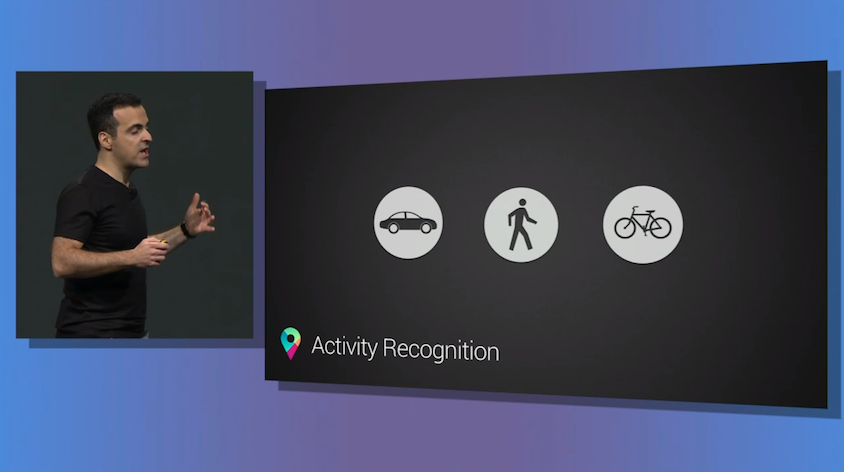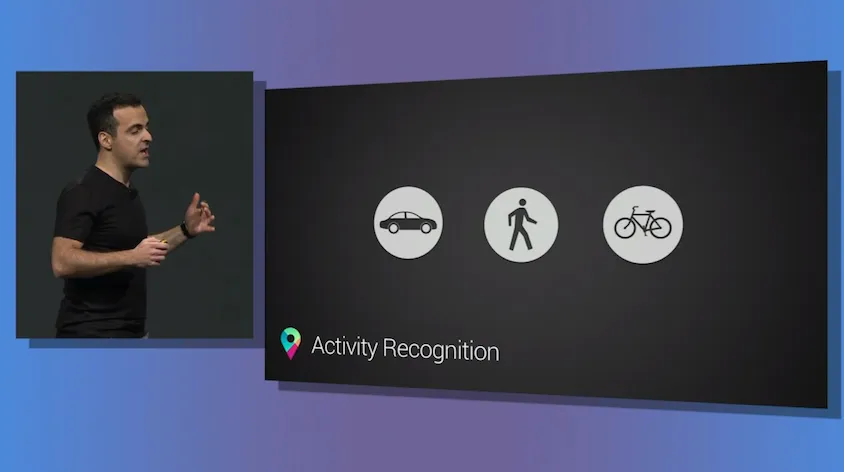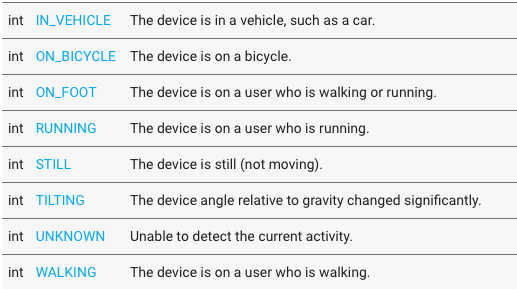Activity Recognition is one of the most interesting aspects of machine learning and contextual awareness. This is what makes our smart-devices truly “smart” and aware. Back in 2013, Google launched the ActivityRecognitionAPI to developers (and yes, this article is a bit late to that party) and yes, iOS has also had this feature since 2013 –CMMotionActivity.

Google image via Google I/O livestream: (Copyright: VentureBeat)
A Brief Introduction
For those of us who don’t know about the API, the ActivityRecognitionAPI is basically an interface that allows android app developers to know what “activity” the user is currently engaged in without the hassle of getting raw data from individual sensors and then having to run a complex analysis to come to a conclusion. The API returns the detected activity together with the confidence of its results.
So the developers get to know whether someone is running, walking or cycling, so what?
The ActivityRecognitionAPI isn’t just an API that can be used for fitness tracking, although, it would be the most obvious use case. Here’s a simple use case, the majority of times, we use Google Maps/Here Maps/OSM, there is this little but inconvenient step of having to select a mode of transportation but if the ActivityRecognitionAPI running in the background knew with 100% confidence that I was walking, maybe the developers could then simply show walking directions instead.
Of course, with data like this, there are a lot more than one can do. OpenSignal.com had an interesting example:
For anyone operating a sensor network – like WeatherSignal or OpenSignal – then this is a huge windfall. We’ll be able to compare the performance of signal in vehicles, to when the phone is still (most likely at home/work), and we’ll be able to filter our weather readings more precisely. – OpenSignal.com
One of the biggest talking points for the Apple Watch was that it would remind you to get up and move around when you have been sitting for too long but your Android phone could have been doing the same thing for 2 years now. Granted, the Apple Watch (or any smartwatch) for that matter would do a better job at fitness tracking than your smartphone.
Are apps really making use of Activity Recognition?
Really, the possibilities are endless with such capabilities and of course, there would be privacy concerns as well. But rather the more intriguing question is “Are there many apps that make of use of the API” and if not, why aren’t they using the API!!
When smartphones became ubiquitous, there was an explosion in the number of location based applications. The way we navigate changed. Period. Granted, it did take a few years for the developers to take full advantage of the GPS in our smartphones and maybe the same development cycle also applies to Activity Recognition as well. Maybe there are already several apps that use Activity Recognition in subtle ways. If you know applications that already make of the API, do let us know 🙂
Here’s a wish: Google Maps has been getting a lot of useful updates lately and hopefully the ActivityRecognitionAPI eliminates the need for selecting the mode of transport as well.









